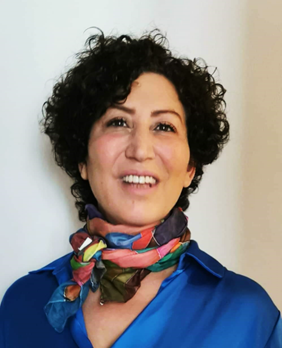Definition of creativity and free associations (DHWB-01-EN)
This exercise is about brain storming. Participants should first, each for themselves, explore the question of what creativity can mean for them personally. Not everything has to remain so serious, because this exercise is much about fun! The more creative the answers, the better. At the end of the exercise, the participants decide which personal statements on creativity they want to share with the group.
LessThis exercise is about brain storming. Participants should first, each for themselves, explore the question of what creativity can mean for them personally. Not everything has to remain so serious, because this exercise is much about fun! The more creative the answers, the better. At the end of the exercise, the participants decide which personal statements on creativity they want to share with the group.
This exercise is about brain storming. Participants should first, each for themselves, explore the question of what creativity can mean for them personally. Not everything has to remain so serious, because this exercise is much about fun! The more creative the answers, the better. At the end of the exercise, the participants decide which personal statements on creativity they want to share with the group.
- Focus on
- Open-mindedness
- Self-awareness
- Self-expression
- Type
- With guidance
- Group size
- up to 10 participants
- Duration
- Up to 30 min
- Settings
- Face-to-face
- Training field(s)
- Creativity Development
- Resilience Building
- Soft Skills
- Competence / skill
- Ability to capture, grow and bring an idea to life
- Self-motivation & perseverance
- Learning from experience / take up and integrate new knowledge

Title
Definition of creativity and free associations
Method
Independent self exercise
Materials
Paper and pencil
Preparation
A relaxed environment without interruptions
Time for preparation
5 min
Tips for implementation
You can also prepare a t-Shirt, or printed mug or… (use your creativity…) with a very good definition you have created.
Resources/References
Charles Hutchison Clark: Brainstorming: How to Create Successful Ideas. Wilshire Book Company, 1989, ISBN 0-87980-423-8.
Learning outcomes
Through this method/action, these benefits are achieved:
- Experience creativity in a funny way
- Learn to create fun you can share with others
Description in clear steps
Creativity is a word used in different contexts and meanings (think about using the term of “creative bookkeeping” for fraud). (You can also read up in the project handbook/manual about this). But you can also be creative by playing with this word. A popular game is the “xxx is….(giving an unexpected example)”. Do the same and give some unexpected or funny examples, of what creativity can be, for example- “creativity is … finding a new excuse every day to keep eating unhealthy food you love…”
- Step 1: Take a paper and easy writing tool. You can also use a voice recorder if you prefer a spoken flow of words.
- Step 2: Relax, maybe do a relaxing or meditation exercise
- Step 3: Start creating funny examples for what creativity can be - they can be stupid or politically incorrect, no problem, that can be corrected at stage 4 before you share, but at this stage, do not restrict your flow of ideas
- Step 4: Check if you want to share the result and in which form
Contributor
Reem Alksiri
Self-description of contributor and his/her offers
Born in Syria, studied law with specialty arbitration and international law in Syria, Lebanon and Egypt, , master of international law, working in Aleppo, had to move to the Netherlands due to the war, Dutch citizen, now also in Vienna (Austria), online network and counselling for women and victims of violence, numerous professional books, stories and poetry.
Offers workshops in creativity and resilience building especially for women.
Spoken language
English, Dutch, Arabic
Artist's picture

Calendar
Announcements
- - There are no announcements -
